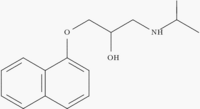Dear Dr. SerVaas,
I had severe migraines for over 20 years. Then I read about peanut butter allergies sometimes causing migraines. Since I was an avid user of peanuts and peanut butter--almost daily--I eliminated them from my diet.
The migraines faded away. I'm 90 percent free of the migraine problem, no longer suffering from debilitating attacks. Perhaps this information can help others.
Billie James
Riggins, Idaho
Dear Dr. SerVaas,
At the age of 50, I was finally directed to a neurologist who was successful in getting rid of migraines. After trying different strengths, we came up with satisfactory doses of Elavil (one 25 mg tablet at bedtime) and Inderal (one 40 mg tab, twice a day, morning and night), with no side effects.
I am happy to write today that I have not had a migraine since I was 50 years old. I am now 72. Between my medical insurance and Medicare, the medications are free.
I thank the Lord that I found these medications. They have changed my life. I pray they will help someone else.
Joy Carson
Lutz, Florida
Thank you for sending us your migraine therapy. Like you, others have written that combining an antidepressant such as Elavil and a beta-blocker heart drug like Inderal may have helped. Readers have also reported that a daily regimen of anti-inflammatory or anti-convulsant medicines have reduced the frequency and severity of their headaches.
COPYRIGHT 2006 Saturday Evening Post Society
COPYRIGHT 2006 Gale Group



